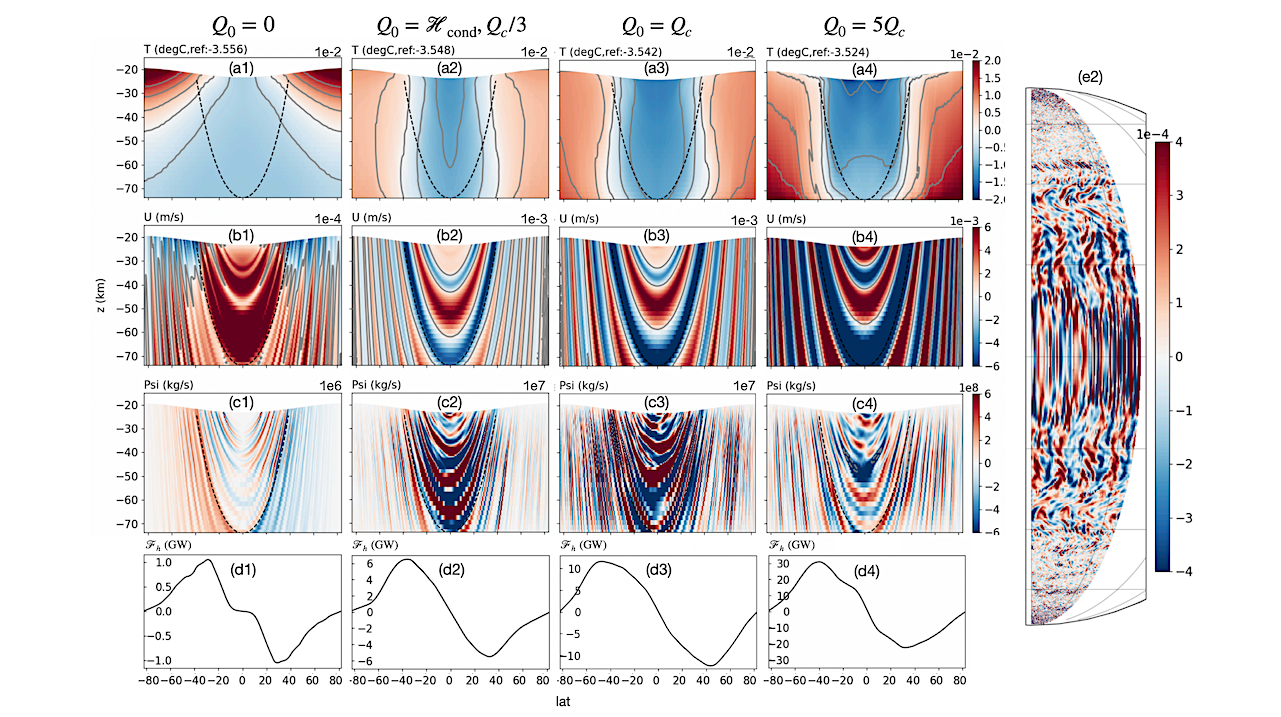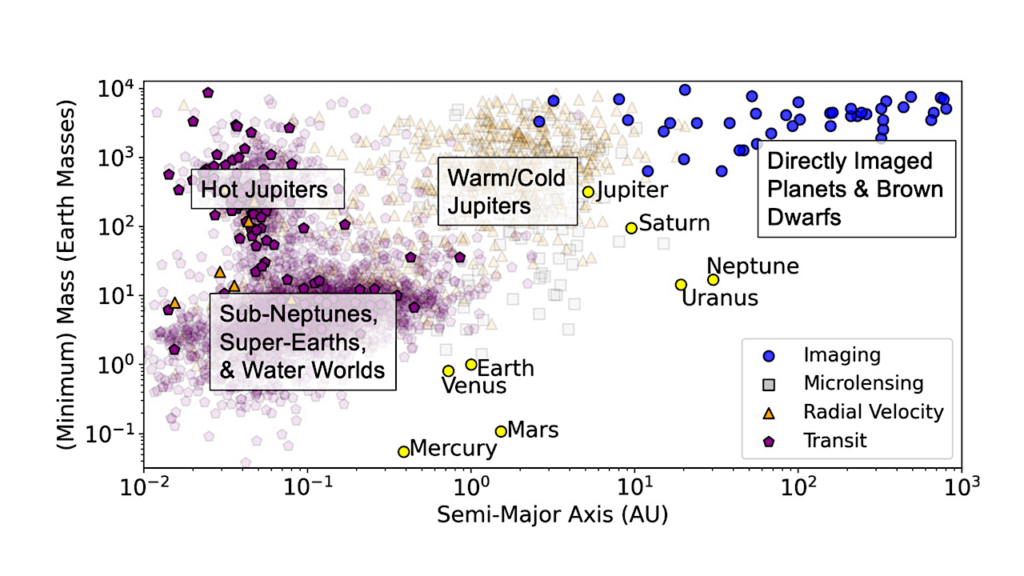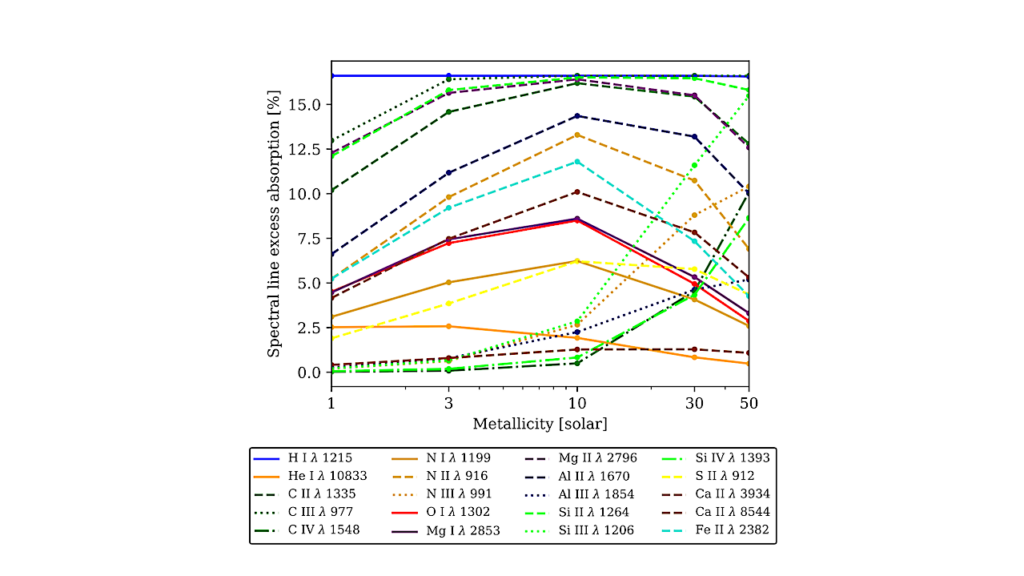The Modulation Effect Of Ice Thickness Variations On Convection In Icy Ocean Worlds

It has been long puzzling whether the ice thickness variations observed on Enceladus can be sustained sorely by a polar-amplified bottom heating. The key to this question is to understand how the upward heat transport by convective plumes would be interfered by the temperature and salinity variations beneath the ice due to the ice thickness variations, which however, has yet to be explored.
Here, we find that the horizontal temperature variation induced by the ice topography can easily be orders of magnitude greater than the vertical temperature variation induced by bottom heating using scaling analysis. Due to the dominance of horizontal temperature gradient, convective plumes are completely shut off by a stratified layer under the thin ice formed out of baroclinic adjustment, largely slowing down the vertical tracer transport. The stratified layer will also deflect almost all of the core-generated heating toward the regions with thicker ice shell, destroying the ice thickness gradient.
This results allow us to put an upper bound on the core-generated heating on Enceladus, which is crucial for the estimate of habitability. Scaling laws for the bottom heat flux to penetrate the stratification is derived and examined. This scaling can be used to constrain the maximum ice thickness variations induced by heterogeneous bottom heating on icy satellites in general, which can be used to differentiate icy satellites that generate the majority of heat in the ice shell from those that generate the majority of heat in the silicate core.
Wanying Kang
Subjects: Earth and Planetary Astrophysics (astro-ph.EP)
Cite as: arXiv:2307.09559 [astro-ph.EP] (or arXiv:2307.09559v1 [astro-ph.EP] for this version)
Submission history
From: Wanying Kang
[v1] Tue, 18 Jul 2023 19:17:08 UTC (48,228 KB
https://arxiv.org/abs/2307.09559
Astrobiology








